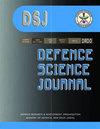Machining and Tribological Characterisation of Uncoated and Coated Carbide Inserts while Turning Tungsten Heavy Alloy
IF 0.8
4区 工程技术
Q3 MULTIDISCIPLINARY SCIENCES
引用次数: 1
Abstract
Tungsten heavy alloys are high density alloys containing 80 to 98 wt.% tungsten and the balance is a matrix made of relatively low melting elements such as copper, nickel and iron. These alloys are used as radiation shields, CG adjusters and also in armour piercing ammunition. Machining these alloys to close tolerances and finish leads to excessive tool wear, surface damage and hence proves to be a challenging task. This study focuses on turning operation carried out under dry and wet cutting conditions using three different commercially available cemented carbide inserts. Three different feed rates have been used at a constant depth of cut and cutting speed. The best possible cemented carbide tooling solution for machining tungsten heavy alloys has been determined based on the surface finish obtained, chip geometry, cutting forces, and machining temperature. The observations made during machining are correlated to the tribological behavior of the inserts and the alloy with the help of pin-on disc tests. Coated cemented carbide inserts provide surface roughness values lower than 1 µm under finish turning conditions. On the other hand, PVD coated inserts give consistently better results over different feed rates and are found to experience lower tool wear for the specific cutting conditions. Analytical tool wear model suggests better tool life for the PVD coated insert.车削钨重合金时未涂层和涂层硬质合金刀片的加工和摩擦学特性
重钨合金是含有80至98重量%钨的高密度合金,余量是由相对低熔点元素如铜、镍和铁制成的基体。这些合金被用作辐射防护罩、CG调节器以及穿甲弹。将这些合金加工到接近公差和光洁度会导致过度的工具磨损和表面损伤,因此证明这是一项具有挑战性的任务。本研究的重点是使用三种不同的商用硬质合金刀片在干切削和湿切削条件下进行的车削操作。在恒定的切割深度和切割速度下使用了三种不同的进给速率。根据获得的表面光洁度、切屑几何形状、切削力和加工温度,确定了用于加工钨重合金的最佳硬质合金刀具解决方案。在销盘试验的帮助下,将加工过程中的观察结果与镶片和合金的摩擦学行为相关联。涂层硬质合金刀片在精车削条件下提供的表面粗糙度值低于1µm。另一方面,PVD涂层刀片在不同的进给速率下始终能获得更好的结果,并且在特定的切削条件下,刀具磨损较低。分析刀具磨损模型表明PVD涂层镶片具有更好的刀具寿命。
本文章由计算机程序翻译,如有差异,请以英文原文为准。
求助全文
约1分钟内获得全文
求助全文
来源期刊

Defence Science Journal
综合性期刊-综合性期刊
CiteScore
1.80
自引率
11.10%
发文量
69
审稿时长
7.5 months
期刊介绍:
Defence Science Journal is a peer-reviewed, multidisciplinary research journal in the area of defence science and technology. Journal feature recent progresses made in the field of defence/military support system and new findings/breakthroughs, etc. Major subject fields covered include: aeronautics, armaments, combat vehicles and engineering, biomedical sciences, computer sciences, electronics, material sciences, missiles, naval systems, etc.
 求助内容:
求助内容: 应助结果提醒方式:
应助结果提醒方式:


